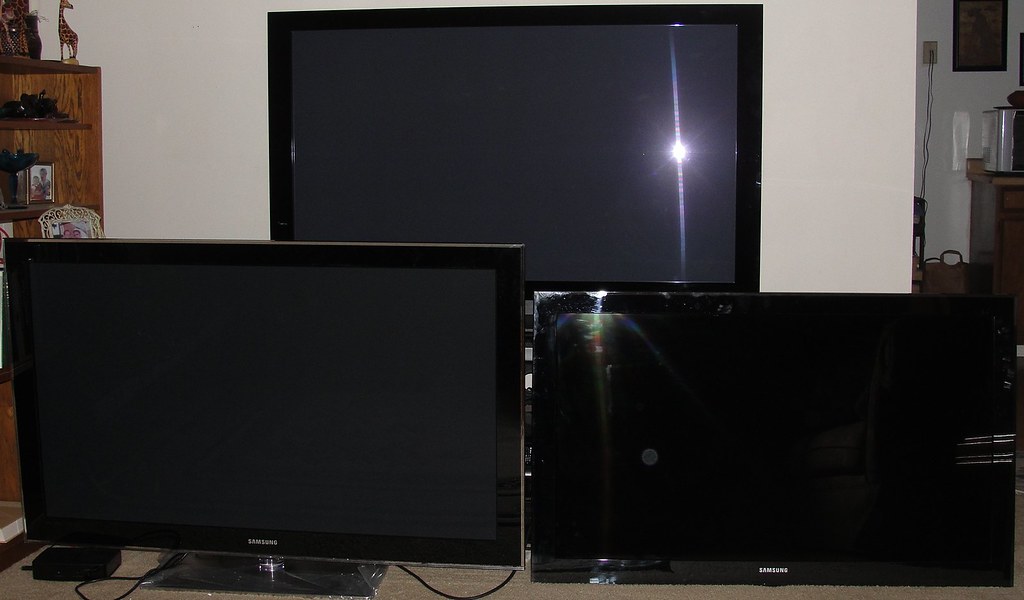I am sorry but have you played planet earth blu ray,go play them in a plasma and compare it to say the samsung lcds with AMP,let me know which is good the stutter/jitter free or less samsung or the jittery plasmas.
First of all, you need to understand what 24p judder is. It is not a problem of Plasmas or LCDs, rather it is an inherent problem with all film sourced material shot in 24 frames per second. Thus to make a blanket statement that either Plasmas, or LCDs for that matter, have judder problems, is totally wrong. So basically the judder caused by the slow 24p frame rate is a problem that both Plasmas and LCDs have to deal with.
Infact why do you think plasma makers are coming up with their own versions to tackle this problem,if its wasn't a problem in plasmas.Their version is different approach.
Yes, and their approach is superior to that of LCD. Like I said, 'judder' is a problem that both Plasma & LCD have to deal with. In fact Plasmas or more specifically Pioneer was the first one to deal with this issue by using 72hz (24 x 3) in their Plasmas. Ever since then, LCDs have simply been trying to play catch up with plasmas in this aspect. Even today with all the new 120hz & 240hz LCDs, the Panasonic plasmas with 600Hz (24 x 25) are able to handle 'judder' the best. In fact Samasung too now employs the same 600hz sub drive technology in their plasmas. Bottom line, penny for penny, a plasma will deal with judder, far better than any LCD in the same price range.
lets get one thing straight ,think about it i mean plasma are cheaper to buy if the plasma was so much better .why do you think plasma have roughly around 10% of the tv marker world over.
Wow! That is the weakest argument, I have ever heard on either side of the debate. So let me understand this, you are sugesting that because LCDs sell more than Plasmas, they are better. I suppose Maruti makes the best cars in India, since they have the maximum market share. Oh and why not look at TV sales in India, Videocon has the highest market share in TV sales, I suppose that means that Videocon makes the best TVs. In fact, due to the way the real world works, sales generally have very little to do with actual quality and time and time again, inferior technologies have won over much superior technologies due to the politics in the economic world. A perfect example is Betamax losing out to the vastly inferior VHS format. As a matter of fact, a far superior technology to both Plasma & LCD, SED TV developed by Canon & Toshiba in partnership never even made it to the stores, simply because of corporate politics. By the way, SED is a technology that incorporates the best of the CRT technology, without the CRT drawbacks such as size, weight, geometry problems due to magnetic interference, or the poor response time of LCDs or image retention problems of Plasmas etc. Basically, imagine a TV with a much brighter and evenly distributed brightness, higher contrast ratio CRT and also deeper blacks than a CRT/Kuro. Add to that, FULL HD resolution with a response time as fast or faster than CRTs, in a slim as a Plasma/LCD frame and without any geometric abberations. That is SED for you. A technology that was demoed for several years and had every single expert gasping and panting with lust, and which was ready for commercial launch in 2007, but one, that was not allowed to make it out of the gates due to corporate politics. Also, lets not forget the Sony technology called SXRD, which was unanimously considered the best TVs to buy before Sony in a surprising decision all of a sudden decided to stop manufacturing it to give more attention to their LCD business, read as, higher margin and more profitable LCD business.
The most important reason for LCDs selling more than Plasmas, is that, LCDs are cheaper to manufacture, specially due to economies of scale achieved due to the much larger PC monitor market, than plasma. Which translates into much larger profits for consumer electronic companies, so ignorant customers are misled, by all sorts of lies and marketing gimmicks, not to mention incentive schemes for TV salesmen and dealers, to buy into the inferior LCD technology.
Many people in other forums have even switched over from plasmas to lcds and some even from kuro.
Even one of moderator in avsforums who was pro plasma,closing any thread of plasma vs lcd that had some hint of lcds in winning state with tempers flying,now has become neutral why because he now has a samsung LED lcd apart from the kuro or was it a panasonic plasma.
Wow! This one even beats, the 'higher sales' argument in being not just feeble at best, but actually in being downright ridiculous. Sorry, but it is impossible for me to debate against such inane arguments.
PS: I too have two LCD TVs other than PC monitors in my house. But how or what that proves, is beyond me.





